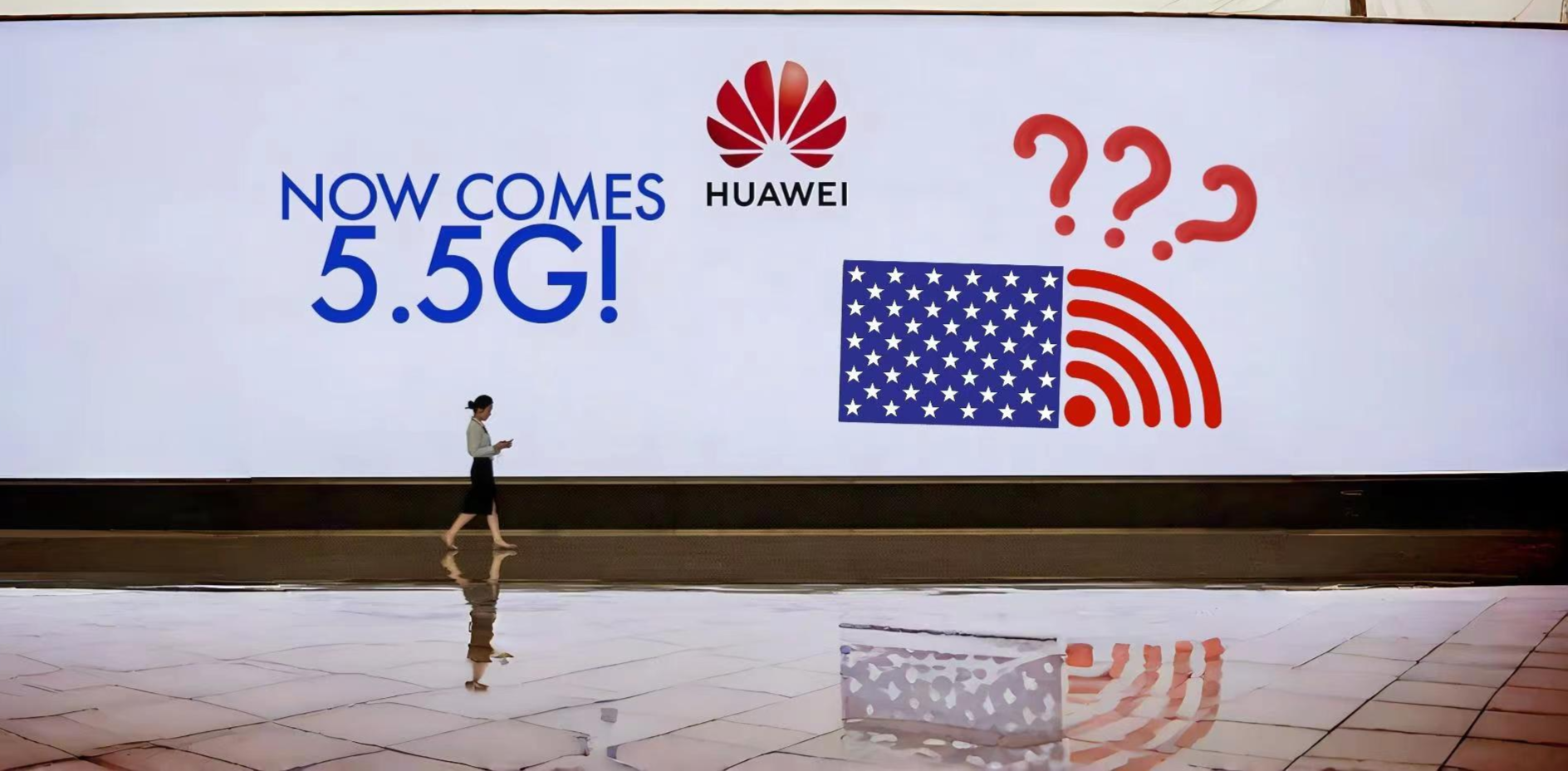ORAN: Hardly a Magic Bullet vs Huawei

Recently, DigiTimes published an opinion piece triumphantly declaring that the US will “beat Huawei once & for all” by promoting an emerging 5G architecture known as “Open Radio Access Network” (ORAN). The truth, however, will be far more disappointing for those who have been trying to diminish & destroy Huawei since 2018. This commentary will explain what ORAN is using easily understandable layman’s terms and analogies and, in doing so, illuminate why ORAN is hardly the “magic bullet” vs Huawei expected by some tech industry pundits.
ORAN EXPLAINED – USING CHEESEBURGERS
A modern mobile telecom network (also known as “Radio Access Network” or RAN) is made up of many sophisticated components, such as baseband stations that transmit & receive radio signals, central/distributed units (CU/DUs) that control the core network and process communications protocols, digital signal processors (DSPs) that extract & improve the quality of useful signals, antennas that direct signals to the intended location, along with numerous backend software and data centers that keep this network running on an industrial scale.
Mobile network operators (MNOs) such as China Mobile, AT&T, Reliance Jio, MTS, etc. typically purchase RAN equipment for an entire end-to-end network from a few large “telecom equipment manufacturers” (TEMs), namely Huawei, Ericsson, Nokia, & ZTE (Samsung is a distant 5th in this market). Equipment from these TEMs is typically not interoperable, meaning that an MNO cannot simply buy a baseband unit from Huawei & a DSP from Nokia and expect those components to seamlessly form a 5G network without significant modifications. However, under the ORAN architecture, it is possible for components from one TEM to be interoperable with those of another within a RAN. Any hardware or software developed in accordance with ORAN standards can, in theory, seamlessly work together with those from other vendors whose products also conform to that standard.
In layman’s terms, cheeseburgers from fast food chains offer an easy analogy to illustrate the change in business model from traditional RAN to ORAN. Traditionally, when consumers go to McDonald’s, Burger King, or some other burger chain, they can choose from a fixed menu of different burgers with limited customization options. Consumers have no say in where any of these chains source the various ingredients used to assemble a cheeseburger – meat, vegetables, bun, sauce, etc. Moreover, consumers must pay for an entire burger even if they choose to exclude some of the ingredients (e.g. a burger costs the same even if a customer asks to exclude mayonnaise). If the “ORAN” framework was applied to the fast-food industry, consumers could just buy burger buns from McDonald’s instead of a complete burger, beef patties from Wendy’s, cheese from Carl’s Jr., etc., and then assemble their own burger. Moreover, consumers can bypass fast-food chains and go directly to alternative suppliers for unusual ingredients (e.g. organic microgreens or spiced ketchup from high-end supermarkets).
ORAN’S POTENTIAL ADVANTAGES & PITFALLS
In theory, the ORAN architecture can offer MNOs a variety of benefits. First, MNOs will not have to buy any components that they do not need, since they are purchasing components in a piecemeal fashion rather than a complete kit for an end-to-end RAN. Second, instead of being limited to the big 4-5 TEMs, MNOs can purchase from a wider variety of vendors, including component suppliers that the big-4 TEMs have excluded from their product designs. This can lead to broader market competition and lower equipment costs. Better yet, MNOs have unprecedented flexibility to optimize their networks to the needs of their subscriber base.
In the context of the US tech war vs China, the US is hoping that ORAN – should it become a widely adopted industry standard – would undermine Huawei’s leading market position in the RAN market. In their ideal scenario, more and more MNOs across the world would purchase RAN equipment in a piecemeal fashion, and do so at a lower cost than what Huawei can offer. Moreover, since the various RAN component suppliers are no longer beholden to the big-4 TEMs and can sell directly to the MNOs, more US component suppliers can have a greater market share. While the US does not have a Huawei-equivalent which can build an end-to-end RAN, they have no shortage of suppliers that can produce RAN components.
For the US, this all sounds wonderful on paper. In practice, there is a litany of financial & logistical issues that make the value proposition of an ORAN framework dubious at best. Theoretically, the key advantage of the ORAN model is one of increased competition among a broader range of equipment (& software) suppliers, leading to decreased prices for RAN components. However, when MNOs make purchasing decisions, they do not simply focus on the cost of individual components, but rather the total cost of ownership (TCO) at the network level. TCO in this context means the lifetime costs of not only the upfront purchase of components for the 5G network, but also the cost of assembling, operating, maintaining, upgrading, & eventually end of life disposal of the network. There are a host of additional expenses that could offset ORAN’s potential cost savings. Here are a few examples that immediately come to mind:
1. Lack of pricing power: when a big-4 TEM negotiates with a supplier, it ultimately represents the collective demand and, thus, the purchasing power of hundreds of different MNOs across the world. When an individual MNO bypasses a big-4 TEM to purchase parts directly from that same supplier, it only represents its own network & subscriber base. It will never match the collective purchasing power of hundreds of telecom companies. This inevitably means that an individual MNO will not have pricing leverage relative to a big-4 TEM. Returning to the cheeseburger analogy, individual consumers can bypass McDonald’s to directly negotiate with beef suppliers for burgers, but they will never consume as much beef as the millions who visit McDonald’s daily, & therefore will never get the volume discounts that fast food chains such as McDonald’s can demand.
2. Complex vendor management: instead of managing relationships with 2-3 big TEMS, MNOs would need to manage tens, if not hundreds of RAN hardware and software vendors. The MNO must negotiate separate pricing, payment, warranty, tech support, & other terms with each supplier. This means that under the ORAN framework, MNOs would need to significantly expand their procurement departments & incur the increased labor costs thereof. Worse yet, increased vendor management complexity also means slower bug fixes & tech support turnaround time. Whenever a flaw or a service outage occurs (as they inevitably do in complex industrial-scale networks), the problem needs to be isolated & diagnosed correctly so as to contact the correct supplier. If the root cause is incorrectly identified, the fix request will be sent to the incorrect vendor, who will be unable or unwilling to fix the problem. After all, no supplier wants to be obligated to fix flaws that they did not cause, or should not be responsible for. When vendors start blaming each other instead of bug-fixing, ongoing maintenance will be a nightmare, resulting in slower fixes and longer service outages. On the other hand, in a more traditional business arrangement with TEMs, there is “only one throat to choke” if something goes wrong, and it is up to the TEM to diagnose & resolve the problem in accordance with the service agreements between the TEM & the MNO.
3. Slower deployments & system integration: when MNOs purchase complete end-to-end RANs from the TEMs, they receive complete kits that they can deploy right away, and there is no doubt about equipment compatibility since the kits all come from the same vendor. However, when purchasing from multiple component suppliers, the MNOs must assemble these kits themselves prior to deployment, and also ensure that all the components will seamlessly work together as promised. For large-scale 5G deployments, this requires an army of IT consultants from system integrators such as Accenture. This would ultimately result in slower and more expensive deployments.
DOES ORAN ACTUALLY HURT HUAWEI?
Looking beyond the logistical & financial problems associated with ORAN, one question is rarely asked by tech pundits: “Does ORAN actually undermine Huawei?” If the ORAN architecture and business model overcome the aforementioned logistical problems and successfully deliver on the promise of cost savings, what stops Huawei from also adopting the ORAN model? After all, Huawei is a one-stop shop that offers a complete suite of products covering the entire 5G network value chain. There are no technical or market barriers that prevent Huawei from adopting the ORAN architecture, then selling its own RAN components in a piecemeal fashion, if it is profitable to do so. In fact, in an open-architecture world, Huawei components may find their way into networks that are traditionally monopolized by Ericsson or Nokia, just as the latter can penetrate 5G network markets currently occupied by Huawei. One might argue that ORAN technical standards can be manipulated in a way that marginalizes Huawei technology, but that would be equally difficult, since there are multiple Chinese state owned & private enterprises that are members of the ORAN alliance (ZTE, China Mobile, etc.), who would resist attempts to skew technical standards that marginalize Chinese vendors.
In sum, there is an old adage in the business world that is highly applicable in this situation: “You can try to cut out the middleman, but you cannot cut out the functions that he serves.” While ORAN offers potential cost savings at the individual component level, there are a host of logistical issues that would increase TCO & more than offset any savings incurred – issues that are traditionally mitigated by the big-4 TEMs. Moreover, even if the telecom industry overcomes these obstacles and ORAN gains real traction, there are few, if any, barriers for Huawei to adopt its own products to this architecture. Therefore, those who are expecting ORAN to be the “magic bullet” to “defeat” Huawei will be sorely disappointed.
https://www.digitimes.com/news/a20240315VL204/huawei-open-ran-china-east-asia-mobile+telecom-mobile-components-mobile-devices-telecom-service-infrastructure-wireless-networking.html





